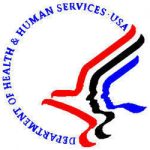 According to the US Department of Health and Human Services, over 11 million Americans misused prescription opioids in 2016. Of those 11 million, an estimated 2.1 million are considered as having an opioid use disorder.
According to the US Department of Health and Human Services, over 11 million Americans misused prescription opioids in 2016. Of those 11 million, an estimated 2.1 million are considered as having an opioid use disorder.
As the opioid epidemic continues to be an issue for the country at large, employers will face new challenges in dealing with individuals with prescription and opioid drug addiction. One of these challenges arises in drug testing applicants and current employees who may be receiving treatment for opioid addiction.
Opioid addiction can be treated in a variety of ways, and one of the most common is through a prescription of a drug called Suboxone. According to the Food and Drug Administration, Suboxone works to mimic opioids by binding to the same receptors in the brain. In this way, the drug tricks the brain into thinking it’s received a dose of opioids and prevents withdrawal sickness. The American Addiction Centers report that common side effects of Suboxone can include: nausea and vomiting, headache, sweating, numbness, constipation, painful tongue, dizziness and fainting, problems with concentration, irregular heartbeat, insomnia, blurry vision, back pain, and drowsiness.
It is important to make a distinction. The Americans with Disabilities Act (ADA) separates drug users into two categories: casual users of illegal drugs and individuals with a drug addiction. The ADA regards those with a history of drug addiction but who are not currently using illegal drugs as having a disability and, thus, protected under the ADA. Conversely, individuals who are casual drug users are not regarded as having a disability and are not protected by the ADA, when the employer acts on the basis of the current illegal drug use. This distinction is important as it directly affects the questions employers can ask applicants and employees.
What happens when Suboxone shows-up on a positive drug test, or an applicant/employee states in response to a drug test or prospective drug test that they are using Suboxone? It’s important to understand that there are a variety of methods which employers use for drug testing. These include urinalysis tests, blood tests, hair tests, saliva tests, and breath tests. Each test type has its own benefits and drawbacks, and each employer should choose which test bests suits their needs. It is important to understand which illegal drugs will result in a positive test, and it is equally important to understand which drugs will not.
If an applicant/employee receives a positive test result, an employer’s laboratory should ask if there are any medications they are taking which might have caused in the positive test result. A current unlawful user of opioids or heroine may indicate that they are taking Suboxone to treat an addiction. In this case, the laboratory may ask for a doctor’s prescription. If the subject cannot satisfy the laboratory that the Suboxone prescription is valid or was not abused, the laboratory should certify the test as a positive. If the Suboxone prescription satisfies the laboratory, the laboratory should certify the test as a negative test. If an applicant/employee divulges to the employer that they are taking Suboxone, it is recommended that the employer direct the employee to the laboratory’s process for verification of prescription medication.
Importantly, employers should have well-defined drug-free workplace policy which both clearly identifies the substances to be tested (including the abuse prescription drugs), and clearly defines the drug testing process. This policy should allow for a medical resource officer verification process through the laboratory to account for the lawful use of prescription drugs.
Attorneys at FDAR routinely draft employer policies and advise employers regarding drug-free workplace and testing programs. For more information please contact Marc Fishel, mfishel@fisheldowney.com, or Grant Bacon, gbacon@fisheldowney.com, or any attorney at FDAR (614) 221-1216.
